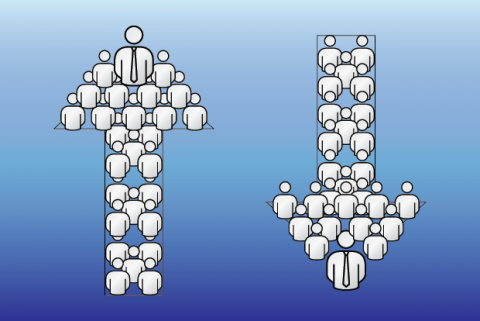Over the years, we have been diligently working on increasing the speed and responsiveness of IT to meet the rapidly changing needs of our business. We adopted agile software development principles and practices years ago, and the vast majority of our project portfolio (90-95 percent) is currently running either Scrum or Kanban. This has gone a long way in helping to change the culture and the mindset.
Instead of asking, “Are you delivering on time and on budget?” we ask, “How quickly are you delivering true business value?”
We are continuously improving and optimizing our best practices of agile development throughout Vanguard. As an example, one of our teams had developed a “10 Questions” mechanism, which identifies whether they are practicing the agile principles in the best manner. This grassroots improvement is now widely adopted by our agile community. Since rolling out the ten questions practice, we have seen considerable decreases in cycle time for minimum feature sets.
That said, as good as agile practices are, they can only get you so far if you don’t have the ability to release to production quickly and continuously. The overhead of releasing features to production, or even just spinning up new development environments, can lead to significant delays in realizing business value.
We are undergoing an internal service transformation which will enable service-oriented infrastructure designed to enable continuous delivery and cloud. We are designing next-gen apps using modular services that are optimized for cloud. At the same time, we are “shifting left” and moving our testing practices upstream while heavily leveraging automation, all to validate quality as we build, not afterwards. All of these efforts must come together to give us the ability to continuously deliver business value, and to prioritize highest business value features first.
Amidst all this activity, what do we do with legacy systems, those monolithic applications that aren’t built for cloud or quick releases? We have been successful with chipping away at large, complex applications.
As one example, we refactored our secure account overview page, a page that receives 84 million hits a year, by separating out the UI into an isolated web app, and created more modular services (known as RESTful) for the mid-tier that sit atop our data tier. Automating test cases and quality checks, and using lightweight client-side frameworks, allowed the development team to quickly release new designs and changes in a matter of days, a process that used to take months. This has effectively created a platform for our retail business to experiment. Using A/B and multivariate testing tools, they are able to run short experiments testing hypotheses on which page designs are effective in assisting clients. They can now quickly iterate through dozens of designs and experiments, as opposed to spending months hoping that their hypotheses prove true.
This approach has become the norm for new development — creating well-contained UIs and reusable mid-tier services. We’ve had success as our business realizes the value of this approach, with a strong willingness to invest into modernization efforts. Movements like Lean Startup have really helped create momentum by demonstrating the business value of good engineering practices, and we are working to capitalize on that at Vanguard.
ALSO READ
John T. Marcante is Vanguard’s chief information officer and managing director of Vanguard’s Information Technology Division. Vanguard is the world’s largest mutual fund company with more than $2.6 trillion in global assets under management. Marcante oversees all aspects of Vanguard’s worldwide technology agenda to serve clients and manage investments. Mr. Marcante, with more than 26 years of experience in the business and technology fields, joined Vanguard in 1993. After serving in a number of leadership roles throughout the company, he returned to the IT division in 2012 and was named Vanguard’s chief information officer and managing director. Marcante holds a Bachelor's degree from Pennsylvania State University and an M.B.A. from Saint Joseph's University.




